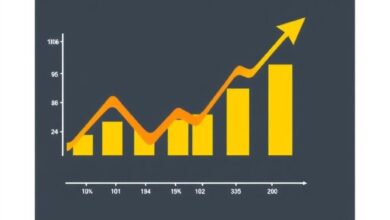What to do when your investments lose value

Establishing a detailed recovery plan is paramount when faced with dwindling asset values. Begin by assessing your portfolio’s performance metrics and identifying the areas that require immediate attention. Conduct a thorough analysis of each investment, focusing on their underlying fundamentals rather than short-term market fluctuations.
Emotion management plays a critical role during this phase. It’s essential to detach emotionally from your investments to make rational decisions. Recognize that losses can be part of the investment landscape; however, they should not dictate your future choices. By keeping a level head, you can avoid impulsive actions that may exacerbate financial setbacks.
Consider reallocating resources into more stable or promising sectors while continuously monitoring market trends. This approach not only mitigates further losses but also opens avenues for potential gains as the market begins its inevitable recovery cycle. Set realistic goals and timelines for your investments to stay focused on long-term growth despite present challenges.
Assessing Portfolio Composition
Reevaluate your asset mix regularly to identify exposure to sectors or instruments that may contribute to losses. An analytical approach can help mitigate emotional responses during downturns.
Focus on diversification. Ensure that no single investment disproportionately impacts the overall performance. A balanced allocation across various asset classes–stocks, bonds, real estate, and commodities–can cushion against volatility.
Review the performance history of each holding. Analyze how different assets reacted during previous market corrections; those with resilient recovery patterns should be prioritized over those that struggled.
Create a recovery plan. Set clear thresholds for reevaluation–if an investment drops below a specific percentage, assess its fundamentals and decide whether to hold or sell. This structured approach reduces emotional decision-making under pressure.
Lastly, stay informed about macroeconomic factors that could affect your portfolio’s composition. Understanding these dynamics will enhance your ability to adapt proactively rather than reactively in challenging times.
Diversification Techniques Explained
Consider allocating funds across various asset classes such as stocks, bonds, real estate, and commodities to mitigate potential losses during a bear market. This approach minimizes exposure to any single investment’s downturn while enhancing the chance of recovery through varied returns.
Incorporate geographical diversification by investing in international markets. Different economies react uniquely to global events, which can cushion your portfolio against localized declines. For instance, if domestic equities falter, foreign assets may thrive, helping maintain overall value.
Utilize sector rotation strategies. Monitor economic cycles and shift investments among sectors that typically perform well at different stages. For example, consumer staples might be resilient in downturns while technology stocks could soar during recoveries.
Implementing systematic rebalancing is crucial. Regularly adjust your portfolio back to your desired allocation percentages. This practice not only enforces discipline but also allows you to capitalize on market fluctuations by selling high-performing assets and buying those that have underperformed.
Avoid emotional trading decisions driven by fear or greed. Establish predetermined rules for buying and selling based on research rather than reactionary impulses. This ensures a level-headed approach during turbulent times when the market sentiment can sway drastically.
Timing the Market Appropriately
Monitor market trends closely to time your entries and exits effectively. In periods of a bear market, adopt a cautious approach, waiting for signs of recovery before reallocating assets.
- Identify Key Indicators: Focus on economic indicators such as GDP growth, unemployment rates, and consumer confidence. These metrics can signal potential turning points in the market.
- Use Technical Analysis: Employ chart patterns and momentum indicators to gauge when to enter or exit positions. Look for support levels where prices may stabilize during downturns.
- Dollar-Cost Averaging: Implement this strategy by investing fixed amounts at regular intervals. This approach mitigates the impact of volatility and allows you to benefit from lower prices over time.
- Avoid Emotional Decisions: Stay disciplined and stick to your plan. Emotional reactions often lead to poor choices, exacerbating losses during turbulent times.
- Set Clear Goals: Establish recovery targets for each asset class in your portfolio. Knowing your objectives helps maintain focus during downturns.
Your ability to make informed decisions based on real-time data will be crucial in navigating through challenging market conditions. Regularly reassess your plan to adapt to shifting circumstances while keeping an eye out for potential recoveries that can restore value over time.
Adjusting Risk Tolerance Levels
Reevaluate your emotional response to market fluctuations. Losses during a bear market can trigger panic, leading to hasty decisions. Instead, establish a framework for adjusting your risk tolerance based on current economic conditions and personal financial goals.
Quantify your comfort with volatility. If significant downturns cause undue stress, consider reallocating assets towards more stable investments. This shift not only mitigates anxiety but also aligns with a longer-term recovery strategy.
Review historical performance patterns of your portfolio. Understanding how different asset classes react in various market cycles can provide clarity on where adjustments are necessary. Focus on maintaining a balance that reflects both your risk appetite and the potential for growth.
Engage in regular discussions with financial advisors to reassess your position and adjust your strategy accordingly. Their insights can help calibrate your approach as markets evolve, ensuring that you remain aligned with your investment objectives while managing emotional responses to losses.







